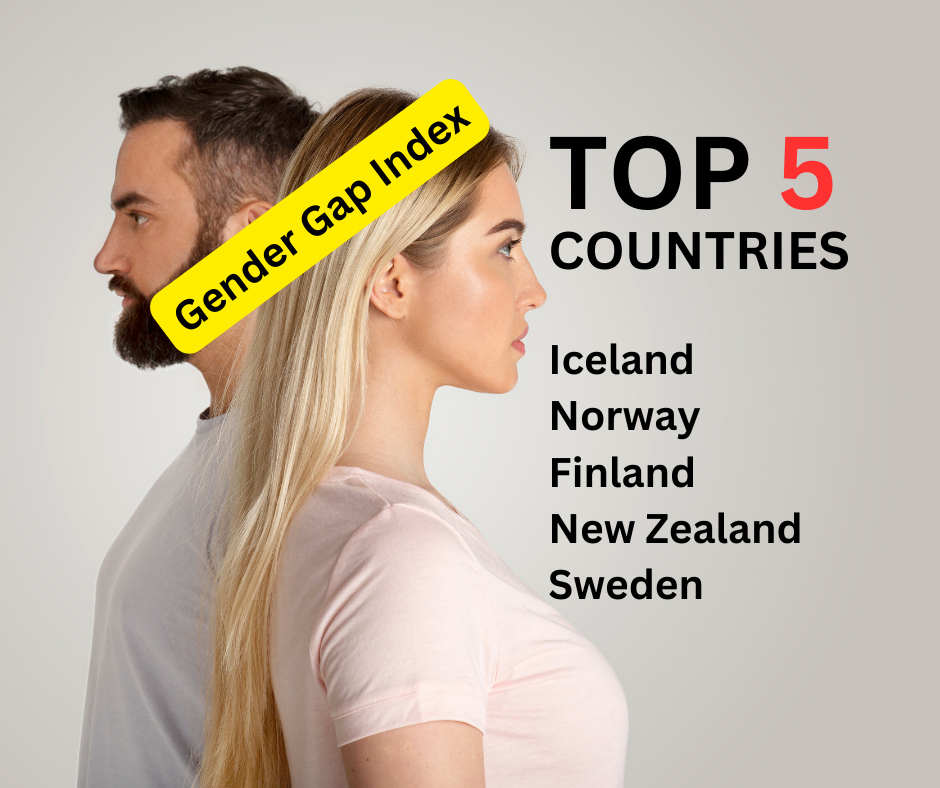India was ranked 127 out of 146 countries regarding gender parity — an improvement of eight places from last year, according to the annual Gender Gap Report, 2023 of the World Economic Forum (WEF).
India ranked 135
India was ranked 135 in the 2022 edition of the gender gap report. The report stated that the country had improved by 1.4 percentage points and eight positions since the last edition, marking a partial recovery toward its 2020 parity level.

The index ranked India’s neighbors Pakistan at 142, Bangladesh at 59, China at 107, Nepal at 116, Sri Lanka at 115, and Bhutan at 103. Iceland is the most gender-equal country in the world for the 14th consecutive year and the only one to have closed more than 90% of its gender gap, according to the report.
The global gender gap score in 2023 for all 146 countries stands at 68.4%. The overall score changed from 68.1% to 68.4%, an improvement of 0.3 percentage points compared to last year. Considering 102 countries covered continuously from 2006 to 2023, the gap is 68.6% in 2023, advancing by a modest 4.1 percentage points since 2006. At the current rate of progress, it will take 131 years to reach full parity.
Global Gender Gap Index
According to the 2023 Global Gender Gap Index, no country has yet achieved full gender parity. The top nine countries (Iceland, Norway, Finland, New Zealand, Sweden, Germany, Nicaragua, Namibia, and Lithuania) have closed at least 80% of their gap. For the 14th year running, Iceland (91.2%) takes the top position. It also continues to be the only country to have closed more than 90% of its gender gap.

For the 146 countries covered in the 2023 index, the Health and Survival gender gap has closed by 96%, the Educational Attainment gap by 95.2%, Economic Participation and Opportunity gap by 60.1%, and the Political Empowerment gap by 22.1%.
Based on the constant sample of 102 countries covered in all editions since 2006, there is an advancement from 95.3% to 96.1% in Educational Attainment between 2022 and 2023. The political empowerment score edges up from 22.4% to 22.5%. Economic Participation and Opportunity regresses from 60.0% in 2022 to 59.8% in 2023.
At the current rate of progress, it will take 162 years to close the Political Empowerment gender gap and 169 years for the Economic Participation and Opportunity gender gap.
Gender gaps in the global labor market
Workforce representation across industries
In LinkedIn’s sample, which covers 163 countries, women account for 41.9% of the workforce in 2023. Yet the share of women in senior leadership positions is at 32.2% in 2023 nearly 10 percentage points lower. Women fare relatively better in industries such as Consumer Services, Retail, and Education.
For the past eight years, the proportion of women hired into leadership positions has been steadily increasing by about 1% per year globally.
Gender Gaps in the labor markets of the Future
Women remain significantly underrepresented in the STEM (Science, Technology, Engineering, Mathematics) workforce. Women make up almost half (49.3%) of total employment across non-STEM occupations, but just 29.2% of all STEM workers.
When it comes to artificial intelligence (AI) specifically, talent availability overall has surged, increasing six times between 2016 and 2022. Yet female representation in AI is progressing very slowly. The percentage of women working in AI today is approximately 30%, roughly 4 percentage points higher than it was in 2016.
Gender Gaps in political leadership
Gender gaps in political leadership continue to persist. Although there has been an increase in the number of women holding political decision-making posts worldwide, achieving gender parity remains a distant goal and regional disparities are significant.








